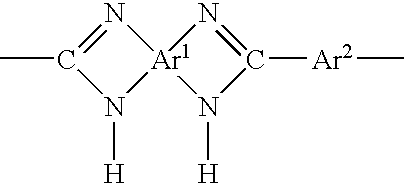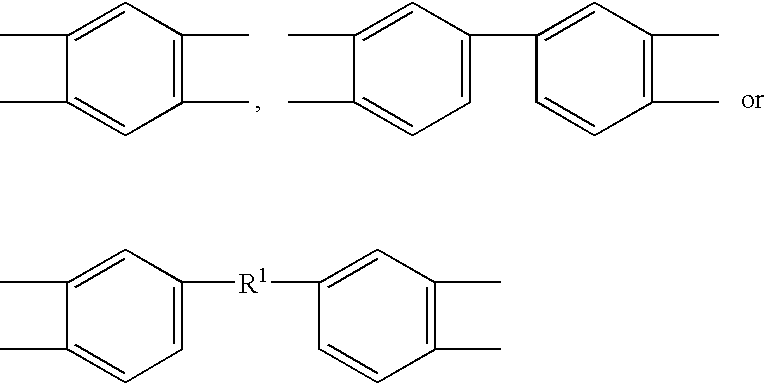Thermoplastic Resin Composition
a technology of thermoplastic resin and composition, applied in the field of thermoplastic resin composition, can solve the problems of difficult to be commonly used for large products, high mechanical characteristics, and inability to meet the requirements of conventional polyether ketone resin and polybenzimidazole resin, and achieve the effects of high rigidity, low cost, and high flowability
- Summary
- Abstract
- Description
- Claims
- Application Information
AI Technical Summary
Benefits of technology
Problems solved by technology
Method used
Image
Examples
manufacture example 1
Manufacture of Liquid Crystalline Polyester amide
[0038]To a polymerization vessel equipped with an agitator, a reflux column, a monomer input opening, a nitrogen gas inlet, a pressure reducing line and an outlet line, the nitrogen-substitution was initiated by adding the following-listed raw material monomers, catalyst, and acylating agent in the space of the polymerization vessel.
[0039](A) 6-hydroxy-2-naphthoic acid: 225.90 g (60% by mole)
[0040](B) terephthalic acid: 66.48 g (20% by mole)
[0041](C) 4-acetoxy-aminophenol: 60.48 g (20% by mole)
Potassium acetate: 22.5 mg
Acetic anhydride: 166.67 g
[0042]After adding the raw materials, the temperature of the reaction system was increased to 140° C. to react for one hour. Afterwards, the reaction system was heated to 330° C. over 3.3 hours, and from that temperature the reaction system was depressurized to 10 Torr (1330 Pa) over 20 min, and the melt polymerization was conducted while distilling acetic acid, excess amount of acetic anhydri...
manufacture example 2
Manufacture of Liquid Crystalline Polyester
[0043]The polyester was prepared in the same procedure as that of Manufacture Example 1 except that the raw material monomers, the catalyst, and the acylating agent were the followings, and that the temperature increase to 330° C. took 3.5 hours.
[0044](A) 4-hydroxybenzoic acid: 226.4 g (73% by mole)
[0045](B) 6-hydroxy-2-naphthoic acid: 114.1 g (27% by mole)
Potassium acetate: 22.5 mg
Acetic anhydride: 233.8 g
[0046]The obtained polyester amide and the polyester were observed by a polarization microscope with crossed nicols in a molten state at 300° C., and it was found that they show a distinctive optical anisotropy, thereby being the thermotropic liquid crystalline resin. The characteristics of individual liquid crystalline resins are given in Table 1.
TABLE 1PolyesteramidePolyesterPolymerMelting point / ° C.280280Melt viscosity / Pa · s8660(Measuring temperature;Melting point + 20° C.)
PUM
| Property | Measurement | Unit |
|---|---|---|
| melting point | aaaaa | aaaaa |
| weight | aaaaa | aaaaa |
| differential scanning calorimeter | aaaaa | aaaaa |
Abstract
Description
Claims
Application Information
 Login to View More
Login to View More - R&D
- Intellectual Property
- Life Sciences
- Materials
- Tech Scout
- Unparalleled Data Quality
- Higher Quality Content
- 60% Fewer Hallucinations
Browse by: Latest US Patents, China's latest patents, Technical Efficacy Thesaurus, Application Domain, Technology Topic, Popular Technical Reports.
© 2025 PatSnap. All rights reserved.Legal|Privacy policy|Modern Slavery Act Transparency Statement|Sitemap|About US| Contact US: help@patsnap.com



